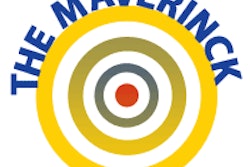
Interventional radiology's status has visibly moved up the agenda at the 2012 Journées Françaises de Radiologie (JFR), which starts in Paris on Friday, not only because of the program's vast array of sessions dedicated to interventional techniques but also because of the subspecialty's new inclusion in the official title.
The Journées Françaises de Radiologie Diagnostique et Interventionnelle reflects the growing role of interventional radiology in everyday practice, according to neuroradiologist Dr. Jean-François Meder, PhD, head of neuroimaging at Sainte-Anne hospital, Paris, and this year's JFR president.
 Interventional radiology now plays an increasingly important role in practice, according to JFR President Jean-François Meder.
Interventional radiology now plays an increasingly important role in practice, according to JFR President Jean-François Meder.
To emphasize this point, an "interventional village," in the form of a large exhibition room will be dedicated to interventional courses and demonstrations on Friday and Saturday. "La route de l'intervention," a physical corridor of intervention-focused posters on the first and third floors, will point the way to the village terminus.
"The two days of interventional sessions organized by Professor Jean-Michel Bartoli from the University Hospital of Marseilles will be of particular interest to young radiologists," Meder noted, pointing to an expected participation of 18,000 delegates, making the JFR the biggest international Francophone meeting in Europe.
JFR will also be the launch pad of the "Interventional Guide," a document straddling a wide range of some 50 interventional topics that will be available online on the website of the French Society of Radiology (SFR) from the first day of the congress. The guide was created by the Federation of Interventional Radiology's working group -- a team of experts made up from each scientific organ-focused imaging society in France -- and will include recommendations for optimizing techniques in procedures such as radiofrequency ablation.
"The overriding reason for the creation of the guide was the improvement in quality of patient care, and its homogeneity across France," said SFR President Dr. Laurent Verzaux, specialist in breast imaging at IRM, Le Havre Center. "This type of guidance shows that our discipline enjoys a certain maturity."
Besides interventional techniques, a major theme at JFR 2012 will be ethics and technology, to be discussed at the JFR's Antoine Béclère honorary lecture to be given in French, and continuing the congress tradition of holding patient-centric sessions.
 Images must not become more important than the patient-doctor relationship, insisted SFR President Dr. Laurent Verzaux.
Images must not become more important than the patient-doctor relationship, insisted SFR President Dr. Laurent Verzaux.
The image must not overtake the patient-doctor relationship in importance, and patients should not see their images as the most crucial part of their prognosis, as opposed to what radiologists can tell them, according to Verzaux. He noted that patients become stressed when they see their markers for breast cancer rise in follow-up, even though they are still well, and radiologists must engage with their patients to curb this tendency.
"We need to ensure that neither party is seduced by images and stuck fast to the screen but that radiologists develop a strong bond with the patients they are examining and have a detailed exchange with them to inform and reassure," Verzaux said. "Minimal facts such as 'yes, the image shows a relapse,' are not good enough; we need to tell them about options and what can be done to help."
The idea of a strong patient-doctor exchange despite proportionally dwindling numbers of radiologists also carries through into the issue of telemedicine in France. Demographics are the motor behind increasing use of teleradiology.
"It is indispensable that [the] patient-doctor exchange is prioritized," he said. "The person interpreting the image needs to be able to have direct contact with the patient. Teleradiology mustn't become an obstacle to that relationship. If anything, this is the most important 'take home' message of all."
Osteoarticular (OA) radiology will be another central theme at the JFR. OA radiology was chosen as this year's subspecialty focus due to its pivotal role in practice, according to Meder. The sessions will span the entire five congress days and will cover shoulder, elbow, hand and wrist, feet and ankles, bony tissue, bony tumors, interventional, hip, and knee.
"In the future we envisage MRI dedicated to OA, so we felt that it was important to clarify the different imaging techniques -- current and potential -- in this area," he noted.
In addition, seven interactive sessions over Saturday, Sunday, and Monday covering abdominal, general, neuroradiology, oncology, chest, emergency, and mammography will invite delegates to discuss clinical cases while three sessions over Saturday, Monday, and Tuesday will prioritize interpretation in neuro imaging, oncology, and OA. As a neuroradiologist, Meder is looking forward to lectures on stroke and neuro-oncology, with particular reference to MR and functional imaging.
 Doctors know best how to organize training to ensure quality in practice, reckons Verzaux.
Doctors know best how to organize training to ensure quality in practice, reckons Verzaux.
Continuous professional development will feature prominently at the meeting, as it has done at previous JFR congresses.
"The ongoing emphasis we place on this issue is a clear statement that we don't have to wait for the authorities to show us what to do or how to train our radiologists," Verzaux said, who for many years has been involved in the organization of radiology at both regional and national levels, witnessing the first law in France in 1996 that made continuous professional education obligatory. "Despite the existence of this law, ongoing training still isn't government-controlled, or evaluated. Conversely, medics are limited by a very slow administration."
The texts to accompany the 2009 HPST (Hôpital, Patients, Santé et Territoire - Hospital, Patient, Health and Territory) law about modernizing health institutes in France and stipulating ongoing training for medics have not yet been published by the government. Verzaux argues that doctors know how to organize training to ensure quality in practice, with or without government guidance.
In France, each subspecialty has its own specific training programs, organized by specific societies or the SFR. For radiologists, such training is paramount, given imaging's place at the crossroads of all specialties and its central role in patient care, from diagnostics through to interventional radiology and post-treatment monitoring.
"In terms of the focus on continuous professional development, we are doing no more or less than in previous years," Meder confirmed.



















